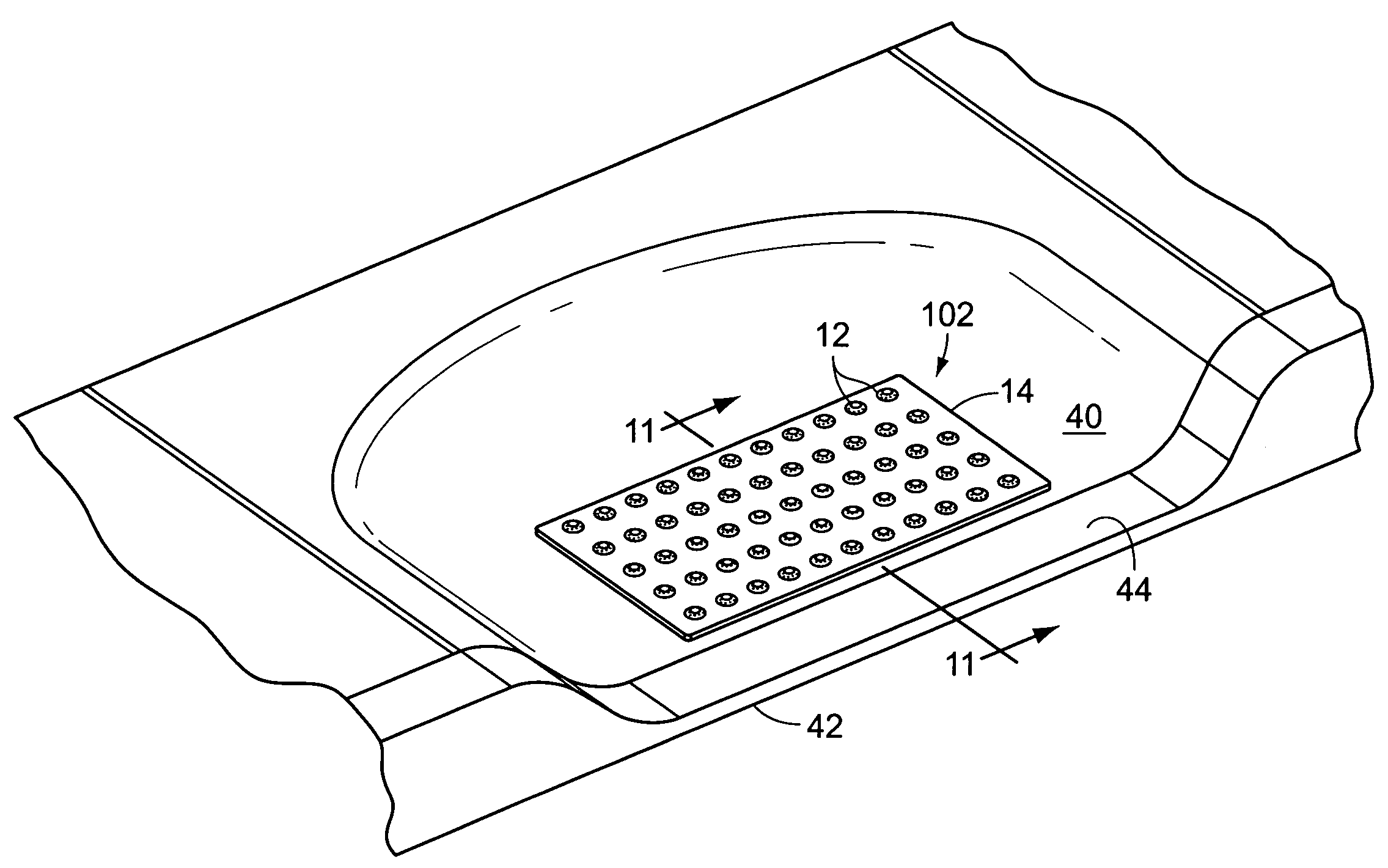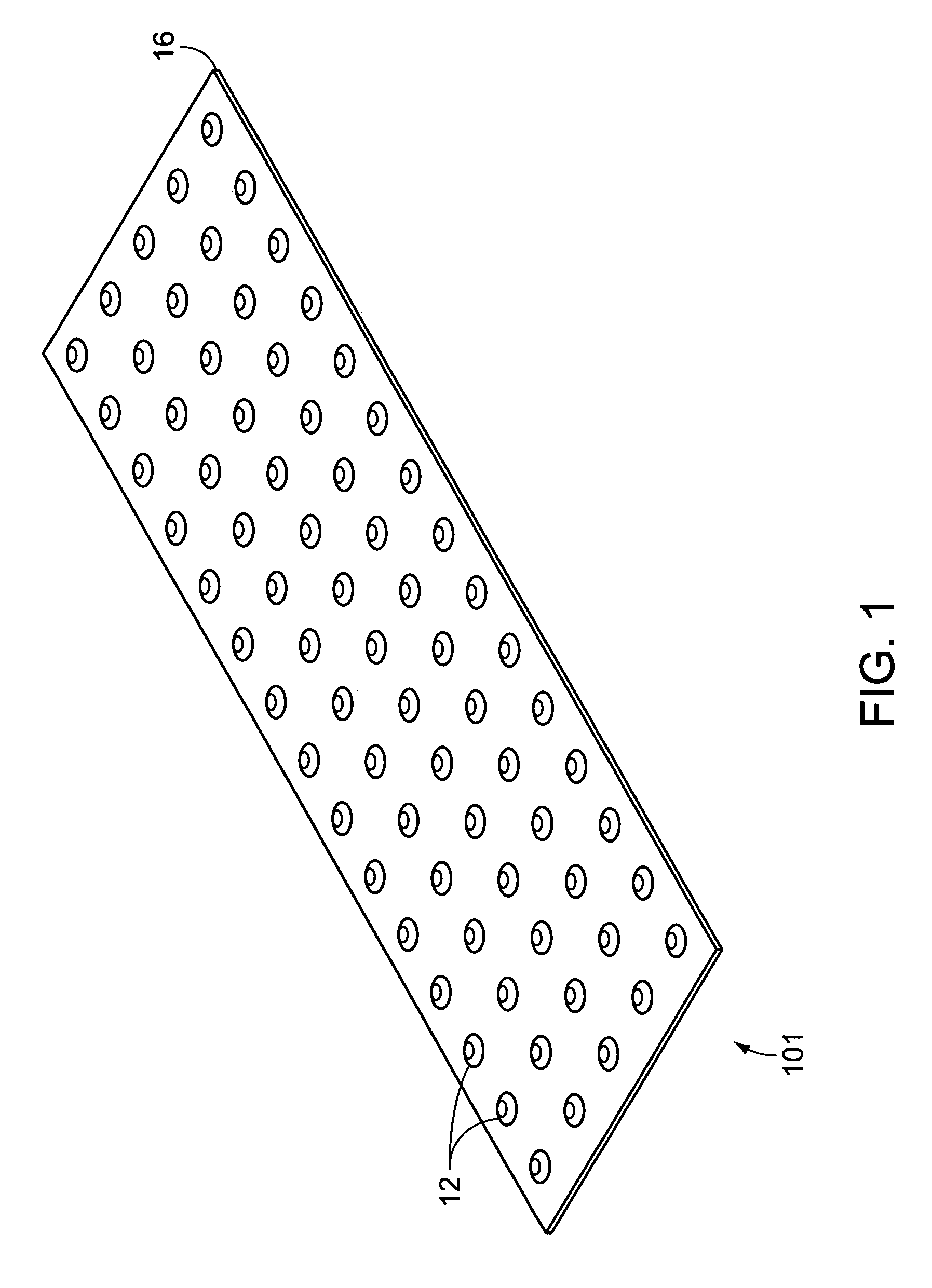Detectable warning system
a detection and warning system technology, applied in wireless systems/telephones, ways, instruments, etc., can solve the problems of difficult installation of warnings, difficulty in discerning the boundary between pedestrian safety and danger, and inconvenient installation of such warnings
- Summary
- Abstract
- Description
- Claims
- Application Information
AI Technical Summary
Benefits of technology
Problems solved by technology
Method used
Image
Examples
first embodiment
[0028]Referring to FIG. 2, formation of the detectable warning carrier assembly centers upon a mold 20 having a top surface 22 and a plurality of dome forming cavities 24 extending downwardly from the top surface 22. The dome forming cavities 24 are shaped like inverted truncated warning domes and are spaced apart as required by regulations such as ADAAG 4.29.2, and to otherwise function as an effective detectable warning. The dome forming cavities 24 are dimensionally modified to accommodate a coating of thermoplastic as will be apparent hereinafter.
[0029]A first sheet of thermoplastic 26 is illustrated extending across the top surface 22, spanning the mold 20, and thereby extending across all dome forming cavities 24. The first sheet of thermoplastic 26 may actually be numerous sheets of thermoplastic that are adjacent and / or overlap each other so that they together substantially span the top surface 22 of the mold 20.
[0030]Referring now to FIG. 3, heat 28 is applied to the thermo...
second embodiment
[0037]Formation of the second embodiment is illustrated in FIGS. 7 thru 9. In FIG. 7, the heat resistant casting material 30 has been added directly into the mold to partially fill the dome forming cavities 24 of the mold 20. In particular, the heat resistant casting material 30 is added until it substantially reaches the top surface 22 of the mold 20. What will become the dome base surfaces 12A are shown as uneven in an exaggerated sense to emphasize the flowability of the casting material. The dome base surfaces 12A are still, in fact, preferably somewhat uneven to facilitate secure attachment to the base layer 14 as will be illustrated hereinafter.
[0038]In FIG. 8 a second sheet of thermoplastic material 32 has been overlaid upon the mold, spanning the top surface thereof, to coat the detectable warning domes 12 and with a continuous piece of thermoplastic material to form the base layer 14. In particular, the second sheet of thermoplastic material 32 spans the mold 20, covers all...
PUM
 Login to View More
Login to View More Abstract
Description
Claims
Application Information
 Login to View More
Login to View More - R&D
- Intellectual Property
- Life Sciences
- Materials
- Tech Scout
- Unparalleled Data Quality
- Higher Quality Content
- 60% Fewer Hallucinations
Browse by: Latest US Patents, China's latest patents, Technical Efficacy Thesaurus, Application Domain, Technology Topic, Popular Technical Reports.
© 2025 PatSnap. All rights reserved.Legal|Privacy policy|Modern Slavery Act Transparency Statement|Sitemap|About US| Contact US: help@patsnap.com



